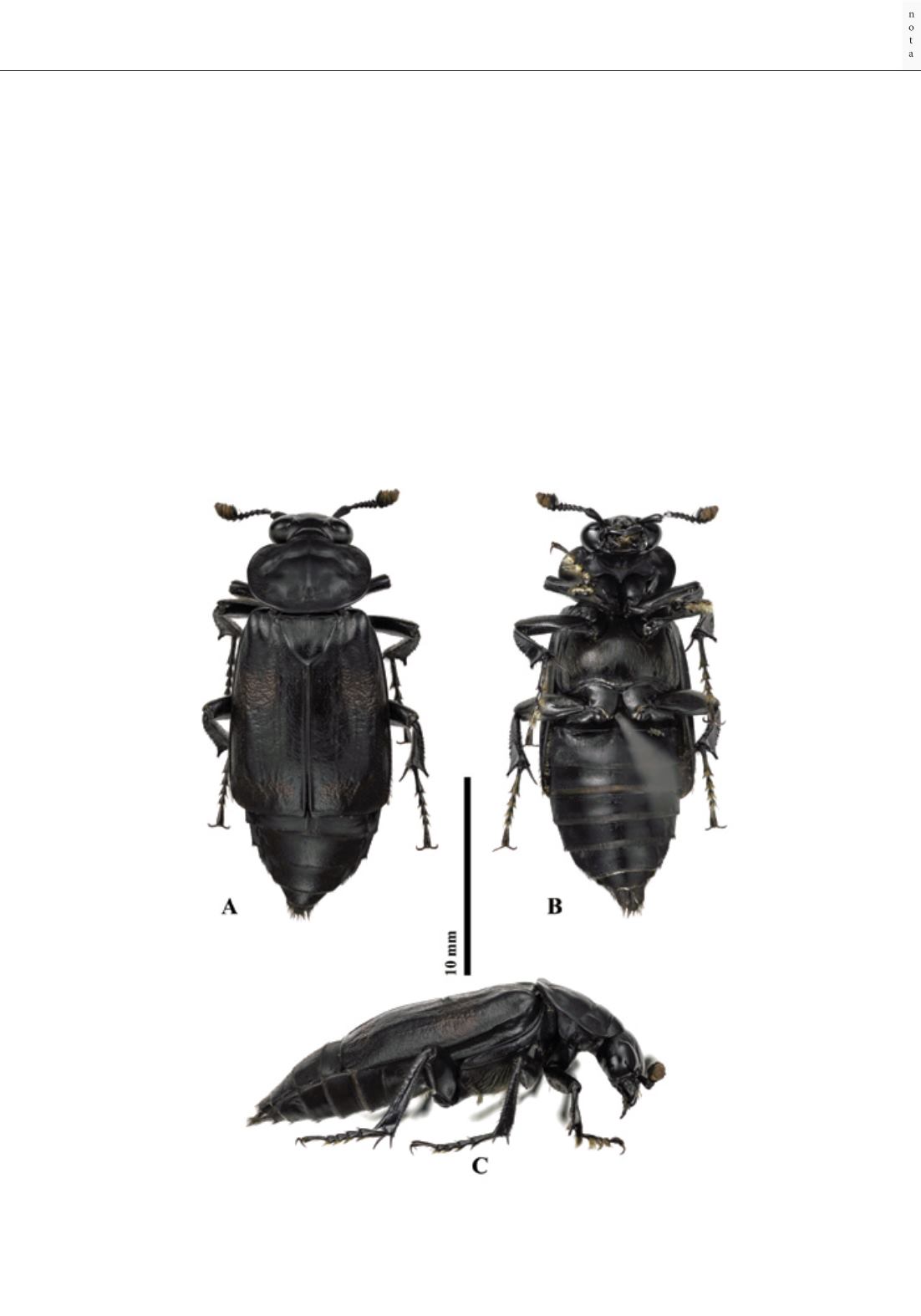

93
PEREZ-GELABERT: New record for the endemic beetle
Nicrophorus hispaniola
General recognition
(Figs. 1A-C). Nicrophorine silphids are dorso-ventrally flattened beetles,
antennae characteristically with a pubescent 3-segmented club, antennal insertions on dorsal face
of head, a large clypeus, a large scutellum, and a subapical bulge on each elytron.
Nicrophorus
hispaniola
can be recognized by having antennae clubbed with apical three antennomeres
yellowish-orange, pronotum orbicular in outline with greatest width across midline, elytron
with a red anterior squared fascia and one posterior squared macula. Elytra covering only
2/3 of abdomen, their posterior margin straight. In the key to New World
Nicrophorus
of
Sikes & Peck (2000)
N. hispaniola
is distinguished from its closest congeners by the colored
anterior red elytral fascia that stretches laterally and the posterior elytral macula being large but
not touching the elytral margin.
New record
. One male, DOMINICAN REPUBLIC, Zapotén, Prov. Independencia, Sierra de
Bahoruco, 18°18.707’N 71°42.467’W, 1540 m, 13-14/ix/2014, uv light & night collecting,
D. Perez. Deposited in the entomological collection of the National Museum of Natural History,
Smithsonian Institution, Washington, DC (USNM) where this species was not previously
represented. This specimen was collected at a UV lighted sheet during crepuscular to early night
hours.
Figures 1A-C. Habitus pictures of male specimen of
Nicrophorus hispaniola
from Zapotén, Sierra de Bahoruco. A, dorsal,
B, ventral, C, lateral).
















